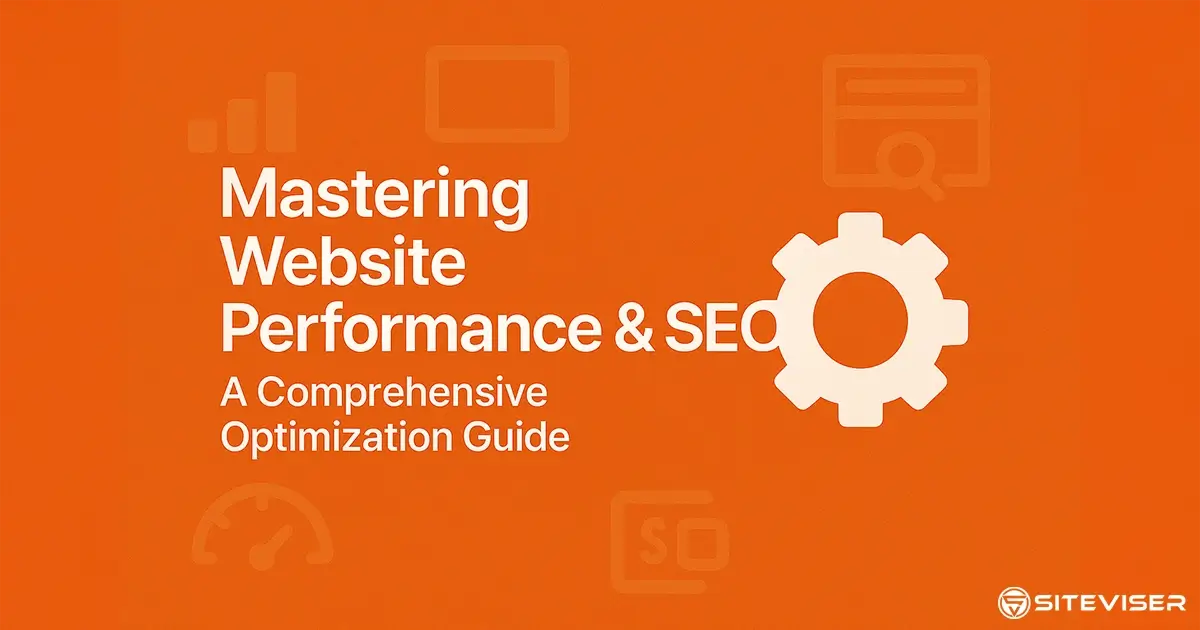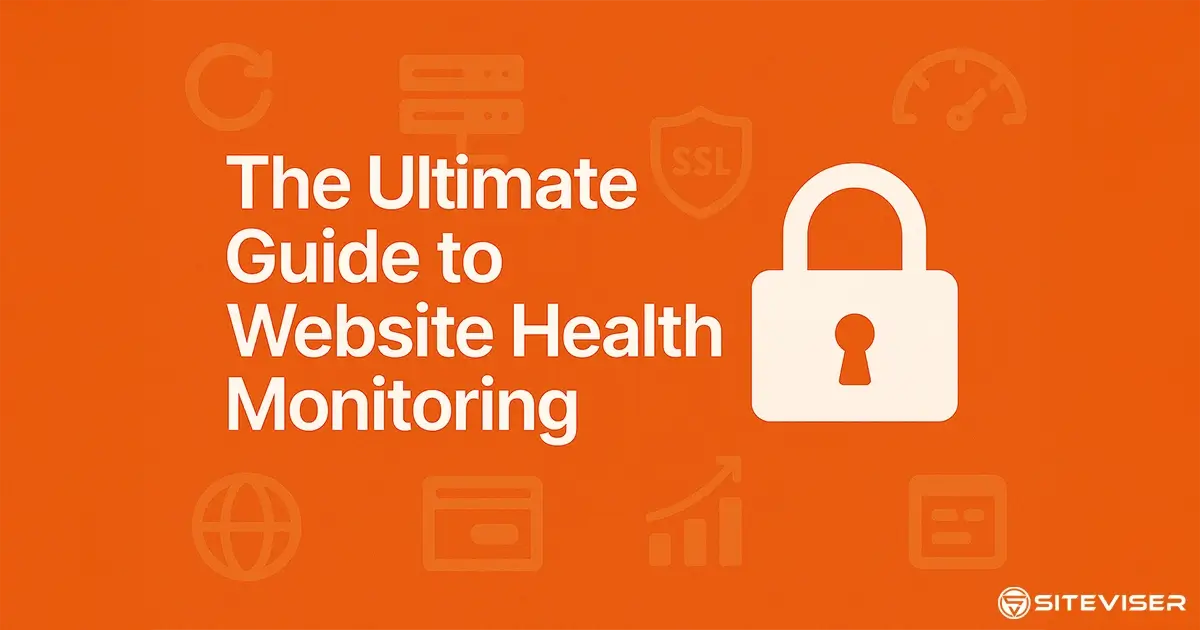In the fiercely competitive digital arena, a slow website isn't just an inconvenience – it's a significant barrier to growth and visibility. The relationship between website performance and Search Engine Optimization (SEO) is undeniable and stronger than ever. Search engines like Google explicitly prioritize fast, responsive, and user-centric websites, directly influencing your rankings and your ability to attract, engage, and convert visitors. This comprehensive guide unpacks the essentials of optimizing both your website speed and overall SEO strategy for maximum online impact.
The Critical Interplay: Why Performance is Foundational SEO
The era where SEO primarily revolved around keywords and backlinks alone is long gone. Google's algorithms now heavily incorporate user experience signals, with website speed and responsiveness taking center stage.
- Enhanced User Experience (UX): Slow-loading pages lead directly to high bounce rates (users leaving abruptly) and short dwell times, signaling poor quality and relevance to search engines.
- Core Web Vitals as Ranking Factors: Google directly uses specific metrics (LCP, INP, CLS – detailed below) to quantify the real-world user experience concerning loading speed, interactivity, and layout stability. These are confirmed ranking factors.
- Efficient Crawl Budget Utilization: Faster websites allow search engine bots (like Googlebot) to crawl and index more pages within their allocated crawl budget, potentially leading to better coverage and quicker discovery of new content.
- Mobile-First Indexing Dominance: Google predominantly uses the mobile version of your website for indexing and ranking. Consequently, stellar mobile performance is absolutely critical for SEO success.
- Improved Conversion Rates: Faster loading times consistently correlate with higher conversion rates (e.g., form submissions, purchases, sign-ups). While indirect, this signals site value and user satisfaction.
Optimizing for performance is no longer a secondary task for SEO; it's a fundamental prerequisite for achieving and maintaining search visibility.
Decoding Google's Core Web Vitals (CWV)
Core Web Vitals form the bedrock of Google's assessment of page experience. Mastering these metrics is key to performance optimization:
- Largest Contentful Paint (LCP): Measures perceived loading speed. It marks the time point in the page load timeline when the largest image or text block within the viewport becomes visible. Aim for an LCP under 2.5 seconds.
- Interaction to Next Paint (INP): Measures overall responsiveness to user interactions. It assesses the latency of all click, tap, and keyboard interactions throughout the lifespan of a user's visit to a page. (INP replaced FID as a core metric in March 2024). Aim for an INP under 200 milliseconds.
- Cumulative Layout Shift (CLS): Measures visual stability during loading. It quantifies unexpected layout shifts of visible page elements, which can be highly disruptive to users. Aim for a CLS score under 0.1.
Improving these specific metrics directly enhances the user experience and positively influences your site's potential SEO rankings.
Key Strategies for Website Performance Optimization
Achieving favorable Core Web Vitals scores and overall fast loading times involves addressing several critical technical areas:
1. Optimize Images Efficiently
- Select Appropriate Formats: Utilize modern formats like WebP or AVIF for superior compression and quality where browser support allows. Use JPEG for photographic images, PNG for transparency needs, and SVG for scalable vector graphics.
- Implement Effective Compression: Employ image compression tools (lossy or lossless) to significantly reduce file sizes without noticeable degradation in visual quality.
- Serve Responsively Sized Images: Resize images to the exact dimensions they will be displayed on the page for different devices. Avoid serving large images only to shrink them via CSS.
- Utilize Lazy Loading: Defer the loading of off-screen images and iframes until they are about to scroll into the user's viewport, speeding up initial page load.
2. Leverage Browser and Server Caching
- Implement Browser Caching: Use HTTP cache headers (like
Cache-Control) to instruct visitors' browsers to store static assets (CSS, JavaScript, images, fonts) locally for a specified period, drastically speeding up repeat visits. - Utilize Server-Side Caching: Generate and store pre-built HTML versions of dynamic pages to serve them instantly, reducing server processing time and database load (essential for CMS platforms like WordPress, Joomla, Drupal).
3. Minify and Optimize Code Assets
- Code Minification: Remove unnecessary characters (whitespace, comments, line breaks) from CSS, JavaScript, and sometimes HTML files to reduce their overall file size without affecting functionality.
- Optimize CSS Delivery: Ensure critical CSS needed for above-the-fold content is loaded quickly, potentially inlining it, while deferring non-critical styles.
- Defer or Async JavaScript Loading: Prevent render-blocking JavaScript by loading non-essential scripts asynchronously or deferring their execution until after the main page content has rendered.
4. Improve Server Response Time (TTFB)
- Invest in Quality Hosting: Your hosting provider's infrastructure, server configuration, and resource allocation significantly impact Time to First Byte (TTFB). Choose reputable providers with optimized environments.
- Utilize a Content Delivery Network (CDN): CDNs cache copies of your static assets on servers distributed globally, delivering content from the location nearest to the user, reducing latency.
- Optimize Database Performance: For database-driven sites, ensure efficient database queries, proper indexing, and consider database caching mechanisms.
- Keep Server Software Updated: Regularly update PHP, web server software (Apache/Nginx), and database software for performance improvements and security patches.
Foundational Technical SEO Factors
Beyond pure speed, a technically sound website structure is crucial for search engines:
- Logical Site Architecture & Navigation: Implement a clear hierarchy, intuitive navigation menus, and descriptive URLs to help both users and search engines understand your site's structure and content relationships.
- Mobile-Friendliness & Responsiveness: Ensure your website adapts flawlessly to all screen sizes and devices (desktops, tablets, mobiles), providing an optimal experience for every user.
- HTTPS Security Implementation: Use valid SSL/TLS certificates to serve your entire site over HTTPS. This is essential for user trust, data security, and is a confirmed ranking signal.
- Accurate XML Sitemap Submission: Create and submit an up-to-date XML sitemap via tools like Google Search Console to help search engines efficiently discover all your important indexable pages.
- Effective Robots.txt Management: Use the
robots.txtfile carefully to guide search engine crawlers, ensuring they can access all necessary resources while blocking access to non-public or duplicate content areas. - Structured Data (Schema Markup): Implement relevant Schema.org markup to provide explicit context about your content to search engines, increasing eligibility for rich results (like FAQs, reviews, products) in search listings.
Continuous Monitoring and Analysis Tools
Optimization requires measurement. Regularly use tools to track progress and identify new bottlenecks:
- Page Speed Testing Tools: Utilize tools like Google PageSpeed Insights, GTmetrix, or WebPageTest to analyze loading performance, get CWV scores, and receive specific optimization recommendations.
- Search Console Monitoring: Google Search Console is indispensable for monitoring Core Web Vitals reports, mobile usability issues, indexing errors, and overall search performance data directly from Google.
- Browser Developer Tools: Leverage the built-in tools in browsers (like Chrome DevTools) for in-depth analysis of network requests, rendering performance, and JavaScript execution.
- Website Monitoring Platforms: Employ services that provide ongoing, automated tracking of performance metrics, uptime, and key SEO factors over time. This allows you to spot regressions or improvements resulting from changes you implement.
The Importance of Ongoing Optimization
Website performance optimization and SEO are not set-and-forget tasks. They demand a continuous cycle of analysis, implementation, and monitoring:
- Regularly Track CWV & Speed Metrics: Monitor your key performance indicators consistently using the tools mentioned above to catch performance regressions quickly.
- Monitor SEO Rankings & Organic Traffic: Keep a close eye on your target keyword rankings and analyze organic traffic patterns to understand the impact of your efforts.
- Stay Informed on Best Practices: Search engine algorithms, browser technologies, and web development techniques evolve rapidly. Stay updated through reputable sources.
- Test and Iterate: Implement optimizations methodically, test their impact on performance and user experience, and refine your approach based on data.
Conclusion: Forging the Synergy of Speed and Search Visibility
Achieving mastery in website performance and SEO is an ongoing commitment. By deeply understanding their symbiotic relationship, prioritizing user experience through Core Web Vitals, diligently implementing technical speed optimizations, ensuring a solid technical SEO foundation, and committing to continuous monitoring and refinement, you build a powerful online presence that not only ranks higher but also effectively engages and converts your target audience.
Ready to accelerate your website's performance and climb the search rankings?
Explore SiteViser Features Now!

